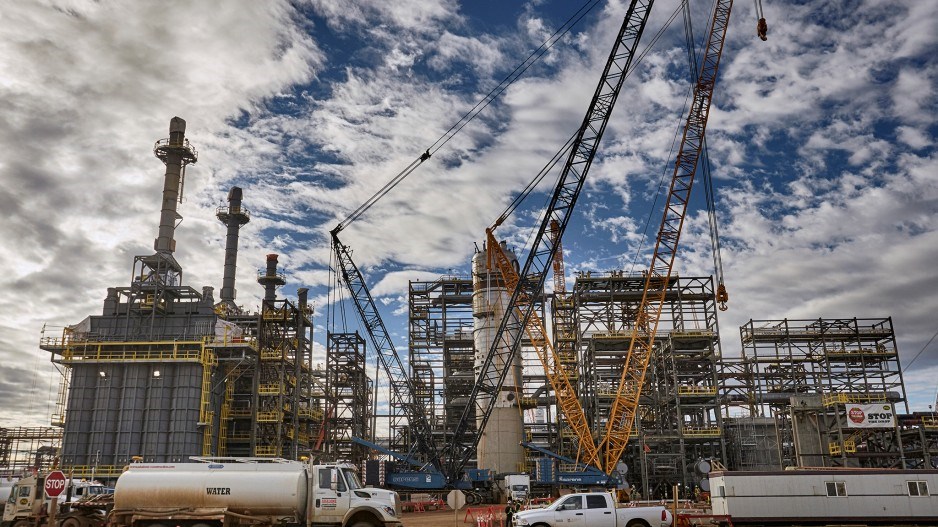The Canadian public is being asked to weigh in on a new oilsands mining project in Alberta owned by Vancouver’s Teck Resources (TSX:TECK.B).
Teck’s $20 billion Frontier oilsands mining project recently entered a joint federal-provincial review panel public comment period.
But not even Teck expects the new oilsands mine to be built before 2026. In the short term, the company is more focused on getting its $13 billion Fort Hills project finished and producing bitumen before year’s end.
Meanwhile, the company could benefit in the short term from a windfall of soaring metallurgical coal prices and a recovery in other commodities it mines or processes such as copper and zinc.
The price for steelmaking coal, which makes up more than 40% of the company’s business, shot above US$300 per tonne again recently. That’s about US$100 per tonne higher than the price Teck was using for an update of its earnings forecasts at the end of March.
“We could essentially be looking at something like 2011,” said Joe Aldina, energy and mining analyst for S&P Global Platts.
That’s when coal reached record prices of US$300 per tonne because of cyclones in Australia – the same reason they were back above that high-water mark last week. In 2011, weather-related flooding took Australian mines out of production, pushing up prices. By the time they were back online and supplying the market, demand for metallurgical (met) coal had begun to fall due to slowing growth in China, and by 2015 met coal prices had dropped below US$80 per tonne.
Four metallurgical coal mines in B.C. were shuttered as a result, and proposed new mine projects, including Teck’s Quintette mine near Tumbler Ridge, were put on the back burner. Toward the end of 2016, met coal prices briefly rose back above US$300 per tonne, then fell back to half that price by the end of March.
More recently, a cyclone took out a key railway link for met coal mines in Australia. Aldina expects spot prices for met coal will remain high for several weeks, which could provide a windfall for producers who are able to increase production and shipments.
Of the four met coal mines that were shut down in B.C., two in Tumbler Ridge were restarted last year by new owners Conuma Coal Resources Ltd. But in an email to Business in Vancouver, Teck communications officer Chris Stannell said, “We have no near-term plans to reopen Quintette.”
Teck is focused on completing the Fort Hills project in Alberta, as well as a copper mine expansion in Chile. Fort Hills production is expected to start in 2017’s fourth quarter. Teck owns 20% of the project; Suncor Energy Inc. (TSX:SU) owns 51%.
Teck is focusing on oilsands development at a time when global players are selling their oilsands interests. Earlier this month, ConocoPhillips Co. (NYSE:COP) announced the sale of $13 billion worth of Alberta assets to Cenovus Energy Inc. (TSX:CVE). In March, Royal Dutch Shell PLC announced the sale of $8 billion worth of in situ and undeveloped oilsands holdings to Canadian Natural Resources Ltd. (TSX:CNQ).
But that doesn’t mean it’s game over for the sector in that province. There is still demand for Alberta oil at U.S. refineries.
According to U.S. Energy Information Administration data released last week, crude oil exports to the U.S. from Canada were up and crude oil exports from Mexico to the U.S. were down for the sixth year in a row in 2016.
Even though more energy companies are shifting focus to shale oil, refineries that were built to process heavy crudes can’t just flip a switch and start refining those lighter oils. Some Gulf Coast refineries were built to process heavy crudes, and Alberta is their main supplier.
Still, oil prices will need to rise to between US$70 and US$80 per barrel before large oilsands mines like the Frontier project can be economically viable, said Mark Oberstoetter, Canadian oil and gas analyst at Wood Mackenzie.
Of the two oilsands extraction methods – steam-assisted gravity drainage (SAGD) and mining – the latter is the most capital-intensive.
“In our current outlook, we don’t have any new-build mines,” Oberstoetter said. “We could see some bottlenecking-type expansions from the existing ones, but we think investors and capital markets will focus more on U.S. tight oil, deepwater sources, SAGD and SAGD expansions before tackling a large mine.
“When we run the numbers and costs and the economics, it doesn’t make sense to go ahead and spend $20 billion. The break-even prices are going to be higher than we have in our forecast.”
Even so, it makes sense for Teck to proceed with the joint review regulatory process now underway.
“You never know,” Oberstoetter said. “Maybe we see higher prices, and then the project makes a bit more sense for Teck, or maybe someone else would be interested in acquiring it, and they’d be more interested if it has regulatory approvals than not. So there are reasons to keep progressing the project through.
“They’re not talking about making a large spending sanctioning decision for that project any time soon. They’ll probably hold on to that one for a longer-term option, if it ever makes sense.”




